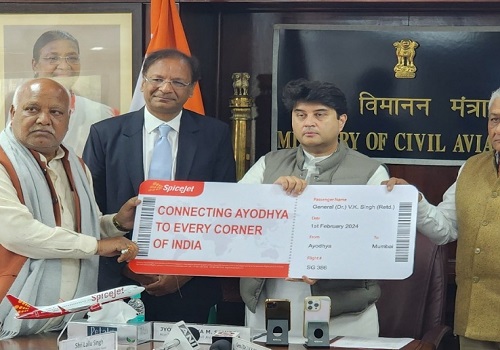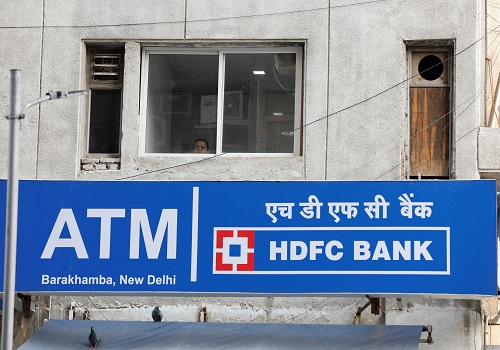Wealth Managemen Sector Report :Growth opportunities galore; innovation is key By Motilal Oswal Financial Services Ltd

Follow us Now on Telegram ! Get daily 10 - 12 important updates on Business, Finance and Investment. Join our Telegram Channel
Growth opportunities galore; innovation is key
* Wealth management in India is rapidly emerging as one of the fastest-growing sectors within the financial services industry, with assets under management (AUM) expanding by 15-20% in recent years. This growth is fueled by robust economic development and a significant increase in the number of ultra-high net worth individuals (UHNWIs) and high net worth individuals (HNWIs). Industry AUM is projected to reach USD1.8t over the next 4-5 years at a CAGR of 13-14%.
* There is a noticeable shift in asset allocation from traditional investments—such as fixed deposits, gold, real estate, and conventional equities—toward emerging asset classes, including alternative investment funds (AIFs), real estate investment trusts (REITs), infrastructure investment trusts (INVITs), private equity, and cryptocurrency. Additionally, foreign investments are gaining momentum, particularly among UHNWIs.
* The Gujarat International Finance Tec-City (GIFT City) is becoming a pivotal facilitator for both inbound and outbound foreign investments. Its tax advantages are anticipated to further enhance this trend.
* New customer segments, such as millennials and women, are emerging with distinct product and service requirements compared to traditional clients. This shift necessitates a transformation in service offerings to meet their evolving needs.
* Key challenges facing the industry include a critical shortage of skilled talent and insufficient investment in technology. The accelerating demand is putting significant strain on the efficiency of the existing wealth management ecosystem.
* 360ONE is strategically positioned to capitalize on these emerging wealth management opportunities. The company has made substantial investments in expanding its resources and technological capabilities, focusing on the mid-market segment (INR50-250m in assets) and global services. Additionally, it is broadening its reach in lower-tier cities. We maintain a BUY recommendation with a one-year price target of INR1,300 (FY26E P/E of 36x).
New customer segments and product innovations key to growth
* In India, new investor demographics are emerging, with millennials and women increasingly participating in the investment landscape. Currently, over 70% of women are independently making investment decisions, and their average investible surplus often exceeds that of their male counterparts.
* In the equities market, there are significant opportunities, particularly in private investments and mid-market buyouts. Although pension managers' assets in India have reached record levels, private investments constitute less than 0.1% of the total AUM. While private equity has gained significant traction among UHNWIs, liquidity risks, as exemplified by cases such as NSE and Swiggy, remain a concern.
* AIFs have grown substantially over the past decade, and REITs and INVITs have gained prominence in the last 6-7 years. Despite their relatively short historical track records compared to other asset classes, these assets have demonstrated strong performance. For instance, while public markets were negatively impacted during the Covid-19 pandemic, private investments remained resilient, with no operating assets defaulting during that period.
* In the listed equities space, there is a trend of companies transitioning from mid-cap to large-cap categories and from small-cap to mid-cap, thereby expanding the investible universe. Fixed income investments in India require significant adjustments following recent changes to taxation of debt mutual funds. Credit AIFs have attracted considerable attention from UHNWIs and HNWIs due to their superior risk-adjusted returns and enhanced due diligence.
* REITs and INVITs have seen substantial growth over the past 7-8 years and have garnered increasing interest due to their stable payouts. Interest in offshore investments through GIFT City has surged, benefiting both outbound and inbound investments, with tax advantages for NRIs and foreign nationals contributing to this trend. This demand reflects a growing need for global diversification in investment portfolios.
* The regulatory environment has become increasingly stringent, with frequent tax changes complicating investment decisions.
Innovation needed in distribution
* Given the strong demand trends, wealth managers are focusing on developing a framework for expanding product offerings and enhancing services without increasing resource allocation. They are introducing new products, implementing granular client segmentation with a targeted approach, and standardizing processes.
* While banks benefit from large customer bases and extensive scale, non-bank wealth managers are emphasizing efficiency. A technology-driven ecosystem will enable banks to leverage their scale effectively while improving operational efficiency. Additionally, banks' extensive branch networks provide them with a competitive edge in establishing a wealth management presence in tier 2, 3, and 4 cities.
* International banks are particularly well-positioned to offer global diversification, leveraging their broad range of products and services on a global scale.
Collaboration and partnerships will broaden reach and product basket
* In response to the rapidly increasing demand for products and services, wealth managers have three strategic options: build, buy, or partner. Given the lengthy lead time associated with developing capabilities internally, acquiring or partnering is often a more expedient approach for achieving quicker results.
* Wealth managers are increasingly seeking partnerships with non-traditional service providers, such as sports management or concierge firms, which cater to the same HNW and UHNW clientele. These collaborations are designed to enhance the breadth of their offerings.
* Partnering with competitors can also expand the product portfolio. Specialized services, such as succession planning and tax advisory, are increasingly being outsourced due to their complexity.
* Additionally, strategic alliances facilitate geographical expansion for local wealth managers
Technology implementation needed across the value chain
* Wealth management industry is witnessing technological challenges, which include 1) siloed client data and disconnected workflows, 2) obsolete tech and legacy systems, 3) disintegrated and disparate systems, 4) efficient data management and reporting, 5) need for harmonization with global standards, 6) high degree of manual processing, and 7) changing regulatory and compliance regime.
* To address these issues, companies are deploying comprehensive technology stacks to digitize the entire client journey. Efforts are also underway to enable advisors and wealth managers to manage client relationships remotely. Key client needs include facilitating electronic withdrawals wherein technology is critical. Another aspect is to provide robust client management tools readily accessible to advisors.
Talent shortage is the biggest risk
* The wealth management industry is currently experiencing a talent shortage that affects all aspects of the value chain, including relationship management (sales), operations, and servicing. As new players enter the market, this shortage is expected to intensify.
* Currently, industry investment in training and upskilling accounts for less than 1% of overall expenditures, a figure that needs to increase substantially to effectively address the talent gap.
* In response, companies are seeking to attract talent from diverse backgrounds and are experimenting with training programs for graduates from business schools. However, it typically takes 5-7 years for a new recruit to become fully proficient as a banker.
* To tackle this issue more effectively, there is a need for closer collaboration between industry and academia to develop programs that cultivate wealth management talent from the grassroots level.
Our view: 360ONE well placed to gain from macro trends
360ONE is looking to diversify its presence in the mass-affluent client segment and geography (lower tier cities + international regions). The resultant investments in team building have kept costs at elevated levels. The benefits of these investments, however, are likely to be back ended in nature. We are building in a minimal contribution from these new (mid-market segment and global platform) diversifications in FY25 and FY26. We have also modeled higher costs due to these new business initiatives. On the core UHNI segment, the company is expanding its presence to lower-tier cities. Over FY24-26, we expect 360ONE to post a CAGR of 19%/26% in revenue/PAT. We reiterate our BUY rating with a one-year TP of INR1,300 (based on 36x Mar’26E EPS).
For More Motilal Oswal Securities Ltd Disclaimer http://www.motilaloswal.com/MOSLdisclaimer/disclaimer.html
SEBI Registration number is INH000000412










More News

Real Estate Sector Update :Commercial markets: Demand-supply trends in top 7 cities By JM Fi...














